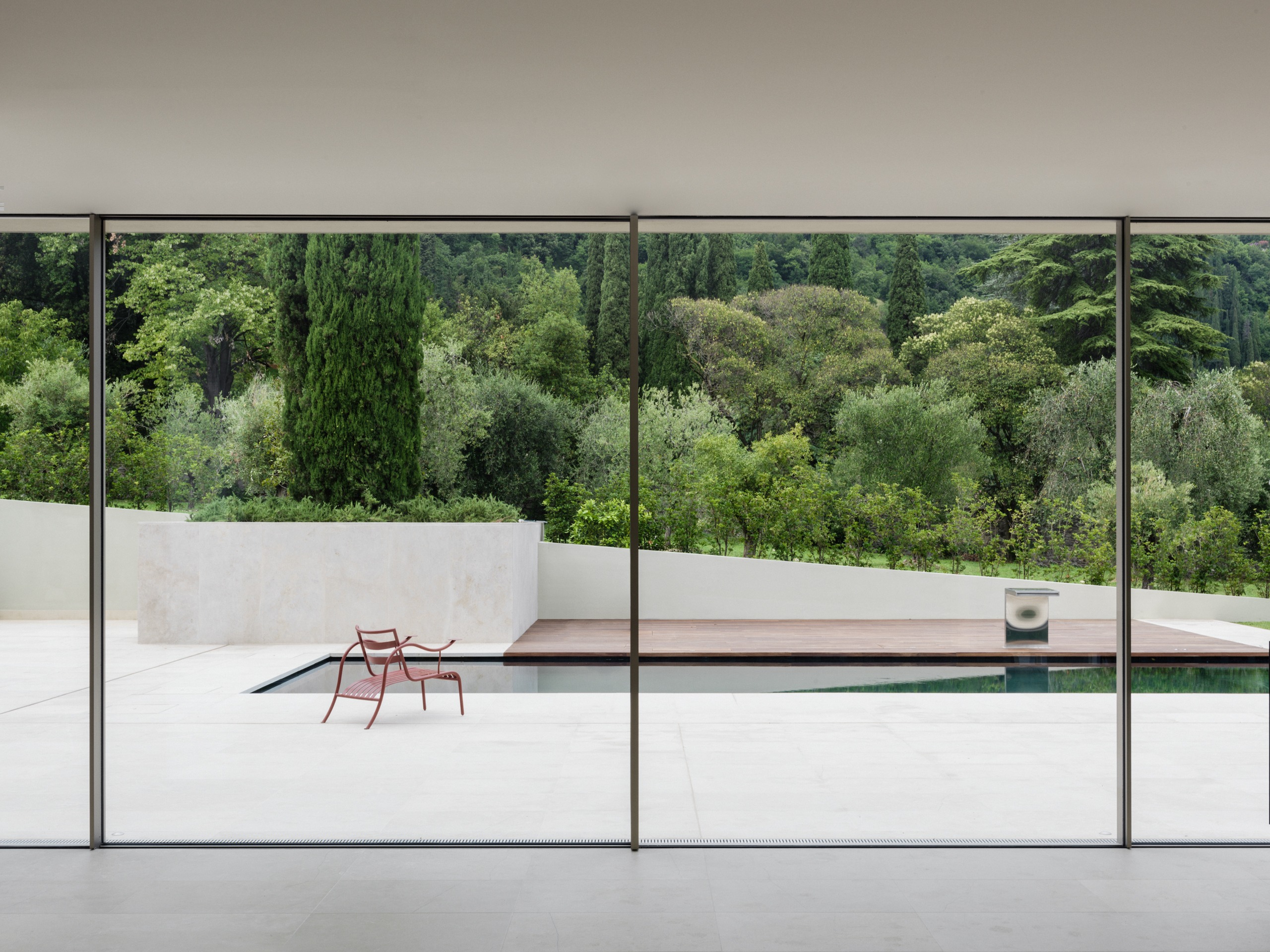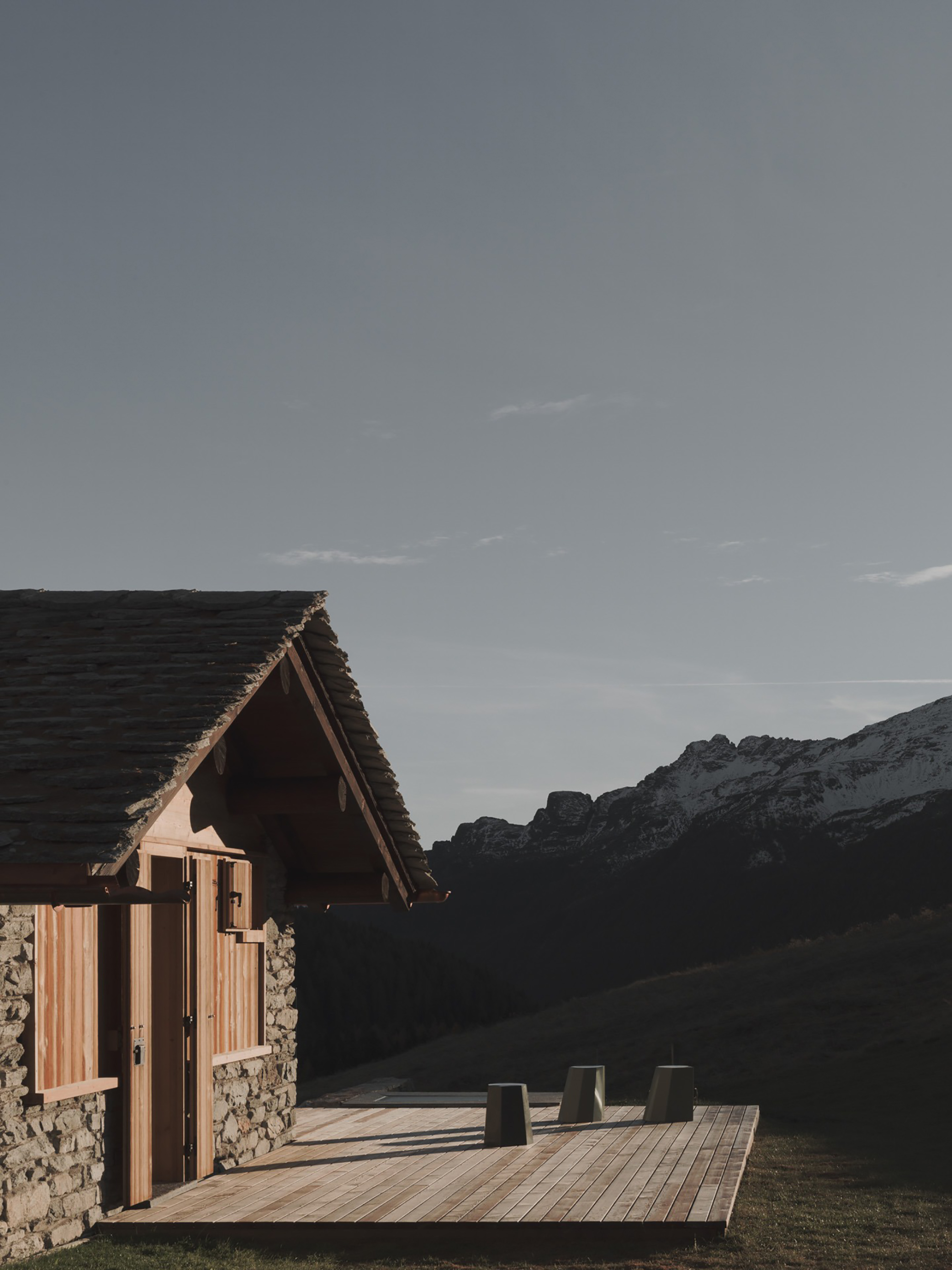Gessato had the great pleasure of talking to Italian photographer Marcello Mariana about his work and photography in general. It was a candid and inspiring conversation that we enjoyed immensely. Mariana’s recognizable talent for composition and capturing elusive, atmospheric, and even melancholic qualities in structures and spaces helped him build a successful career in architectural photography. He has worked with some of the most famous architecture and design firms in Italy and around the world, and his portfolio keeps getting richer. His dreamy shots are a visual record of his intimate relationship with architecture, showing the inner aesthetics and character of the structures altered by his “blue” essence. They are contemplative visual stories about space, but it’s not so much what it looks like but what it feels like. It takes great skill and love for architecture to be able to open the door to elusive spaces for the viewer and, at least for a moment, make them theirs. This is precisely what Mariana is doing through his lens. We hope you enjoy the following interview as much as we did and that it will give you something to inspire to.

Hello Marcello! Thank you for speaking with us today. Please tell us when and how did you fall in love with photography?
Actually, I have never fallen in love with it… Photography was just a means of expression, among many others I was experimenting with during my teenage years and beyond. At some point, it simply turned out that photography was what I did best.
When did your interest in taking shots of architectural structures in particular start to grow? What is architecture to you?
I don’t care that much about architecture in itself as a topic, even though I love photographing it! I think it is just something that adequately suits my photographic approach. I fell into this world by accident since I started training as an assistant for an architecture photographer Andrea Martiradonna. Then one day, I came to realize that well, I could certainly do this too!
Does architectural photography require a particular approach compared to other genres?
Not necessarily… I am prone to consider that the approaching method is intrinsic to the photographer, not the genre. I remember someone once telling me: “Oh man, you’re so bad at portraits! You photograph people as they were buildings…” and I find that especially true. Let’s try to put it the other way round: maybe it is just my attitude that blends perfectly with architectural shooting… Photography is a straightforward equation of light, space, and time. The way you choose to interact and deal with those members defines your intimate process, no matter the subject.
Has your practice changed over time? If yes, in what way?
A lot, really. Right after I started working as a pro, I was just a cheap imitation of Andrea when 4×5 analog photography was still the primary way to go for many architectural photographers. But as time went by and as I began getting more comfortable and confident, my photography evolved accordingly. Beware, I am not primarily talking about style or technique here; I am talking about freedom: freedom to experiment, take risks, and overdue. I am talking about the right to peacefully fail – even to fail badly. Self-confidence has given me more and more room to dare, more freedom to venture on unknown seas.

You place emphasis on composition, light, and tone in your work, making your shots seem intimate and atmospheric. Does it take you a long time to get this feeling across? Also, your subtle use of angles is incredible. Besides capturing essential forms and lines of a structure, you seem to be able to make Alvar Aalto’s words on architecture as an earthly paradise come true. How do you achieve this effect?
Thank you. I am driven by ambivalent, elusive, suspended, and perhaps even melancholy, unresolved, mysterious images, and this is what I always look for. I was inevitably born with the blues. It’s so natural for me to get across certain atmospheres and feelings; there’s no effort. I am simply guided towards this kind of intimate relationship with space. I just follow what fascinates me and try to frame it on the ground glass. Oh gosh, I don’t want to get too sentimental or elegiac now, but it’s really like when you walk down the street and fall in love with that one specific person. You know, photography is true fiction. What I am showing you is just an arbitrary slice of the real world, altered by my essence.
Your work allows you to travel the world and photograph various buildings. Which one has left the strongest impression on you so far and why?
Honestly, buildings per se usually don’t leave strong impressions on me. I remember more the magic of the image appearing on the ground glass when you know you’ve got the good one: that is the epiphany! It’s the creation of the photograph within the experience of the building. The connection with my perception of the space is what makes the whole thing memorable.
In your opinion, what makes good photography?
When it gives you a slap in the face or a sweet kiss on the mouth – it’s probably a good photo. When it doesn’t tell the whole story but gives you room to wonder/wander, that is probably good photography. When it shows you familiar things in an unfamiliar way – it’s probably good photography.
Film vs. digital. What is your opinion on the debate? Does it make sense to you or no?
I really don’t care at all. It’s such a big waste of time. In every creative field, there is always some boring, dumb diatribe related to technology, tools, materials, etc.… I admit I love shooting film; nevertheless, I merely consider it just a tool like any other. The first question should be: what do I want to communicate? What’s the story? Once you have this clearly in mind, you can choose the best tools to tell that story the best way possible. Simple as that.
Do you have a photographer(s) you admire and what for?
I am intrigued more by photographs than by photographers; we are usually pretty boring.
What does it take to become successful in architectural photography?
Oh, I don’t know, I am not that successful [laughs] Anyway, I’d say lots of love and lots of luck.
If you didn’t become a photographer, what would you be?
I often say that I became a photographer out of despair: I was a steelworker in a factory before. The only thing I was sure is that I didn’t want to be a metalworker for the rest of my life. So, if I hadn’t become a photographer, I probably would have invented something else to avoid that…
What advice would you offer to young photographers at the start of their career in a much-saturated market?
Steal a lot. Don’t give a sh*t. Do your thing. Share the Love.
Are you working on some project at the moment, and what kind?
I would like to finally put an end to a project that’s been around for way too long. It consists of a 3-channel video installation + photographs + other stuff, with which I am trying to get over the sentence “if blue is sad, tell me what is red.”
Happy? Did you find your answer? What if blue isn’t a sad color but a meditative and contemplative one?
Actually, it’s not a question I asked myself, but the character behind the project is! I’m not interested in providing answers anyway. I just tried to create a story around that sentence to see where it could lead me … So, where did it lead me? It led me to realize the impossibility of telling a linear, coherent, absolute, and univocal story. To accept the countless, fragmented perspectives it embodies. The Failure of the Universal Story!
Plans for the future?
To build a house in the woods.


